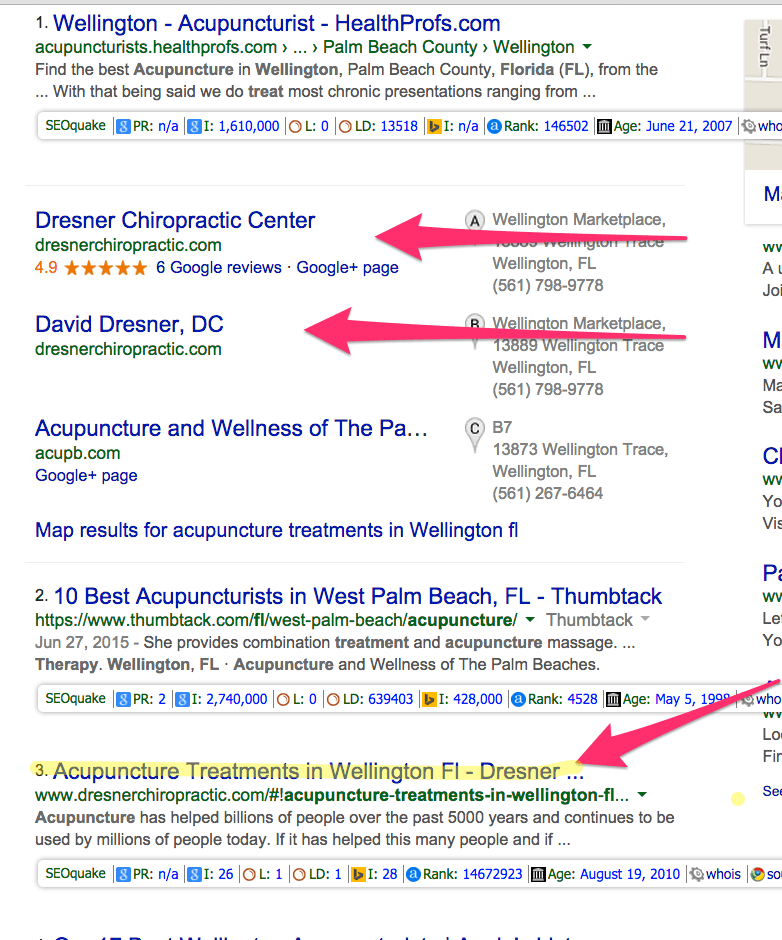In this article I am going to go over the what is working now when creating content. I will share with you what we are doing to get our content to rank quickly and get the Google bots to crawl our site often and index it.
Creating Content Google Likes
Creating content should be at the top of your list of marketing priorities. Content creation has always been important. But since the Panda update which is in a constant roll out content creation has never been more important.
Google loves not just fresh content but also frequently updated content and also long content. You can also curate content with your added commentary and your own images.
Longer content is the new metric. We used to be able to write 300 to 500 word posts and they would fly to the top of the SERPS. That is changing. Also, searching behavior changes over time. Looking for answers to our questions is taking on a new meaning in search. We want to know in depth answers and how to’s not just a gloss over.
41% of businesses struggle with creating enough content according to Contently.
Obstacles Facing Content Creators

Testing Long Form Content
Our Wellington Chiropractor is on page one for many chiropractor terms but he was not on page one for Wellington Acupuncture which is another part of his practice.
Since we already have links going to his main website for chiropractic terms and I did not want to start a niche website just for acupuncture we decided to test out Google’s apparent love for long page content of over 2000 words.
I named a main page instead of a post the acupuncture terms that we want to rank for. Then I did the research for acupuncture and wrote over 3000 words of content on this page: Wellington Acupuncture Treatments. I added alt tagged imaged throughout the content for visual appeal, added bullets and sub-titles so readers can easily scan the content.

Research- People Read Long Form
What Google research has found is that people who are really studying, researching, learning are staying on long content pages. Yes, they are still skimming and scanning but they are staying longer and tend to read more than average if the topic is relevant to their search.
So in this case, someone searching for information about whether they want to get acupuncture treatments or not is going to want to know everything about acupuncture in order to make a decision to call for an appointment or not.
Within 3 hours of publishing the page he was on page one for several geo tagged terms revolving around acupuncture. The phone is already ringing with patients who want to book acupuncture appointments.
Getting Indexed in Google's In-Depth
The added benefit to writing long form content of over 2000 words is you can get an extra indexing spot in Google’s “in-depth” article index. That is something your competitors are most likely NOT doing!

How To Write 2000- 3000 Words
But how do you write 2000 to 3000 words of content on a topic?
It takes time and research.
My goal is to write one 2000 - 3000 word article each week.
A solution for you might look like this:
- Week 1- Choose topic, do your research, write 500 words of content
- Week 2- Write 500 more words of content = 1000 words total
- Week 3 - Write 500 more words of content = 1500 words total
- Week 4 - Write 500 more words of content = 2000 words total
Add images to the page at one time instead of with each section to save time with the exception of your featured image.
You can also publish your content on week 1 and then add to it each week until you have the word count you want to achieve. This way you are only going back into your article to edit it, to save some time.
Personally I like to write my content at one or two sittings. Everyone has their own particular writing structure so follow what is best and most comfortable for yourself.
The biggest tip I can give you about content creation is to write first and edit last. If you suffer from perfection paralysis you need to get over it. Good is good enough. Struggling from sentence to sentence is going to take so long you won’t be able to write 2000 + word articles or blog posts or page content on your website.
Not sure how you are going to write to think of 2000 - 3000 words on one article?
- Choose a main topic.
- Create some subtopics.
- Gather up your images.
Use Images to Add Interest
Images will spark your imagination with more content you can write.
We process images way faster than we do text. Humans process images 60,000 times faster than text. That is a lot! Take lots of photos in your niche and also other things that you can use in your posts like:
- Graphs
- Infographs
- Charts
- Cartoons
- Memes
- Stock Images ( make sure to follow the TOS of each company.)
Research shows that you should have one image for every 350 words of text you write.
You can follow the format I used for the Acupuncture page.
Add Video to Long Form Content

Add a video or a slideshow to your post, article or page for visual appeal and to interest the visual learners and viewers. Get on YouTube now- there is still plenty of room. Engagement on video is growing fast and furious. Don't miss out on this.
Read more about YouTube SEO and Periscope tips here.
Make sure to stay within one main keyword topic and its related keywords and use plenty of semantical terms throughout your content.
Google’s algorithm is smart but not no smart that it can read your mind. You still need to make it clear what topic you are writing about. Another perk to writing long content is that you have more areas and places within your content to sprinkle in your keyword phrases, their related semantical terms and topical relevant textual content.
To this point in this article we are at 625 words of content so far.
Adding Different Forms of Content
Here are some more ways to add more content to add to your article:
- Find thought leaders in the topic you are writing about.
- Read their articles.
- Find a couple of quotes from the thought leader and quote him or her in your content.
- Make sure to add his quote in quotes and credit the source.
This technique also gives a nice visual appeal to your article along with helping you attain more credibility.
"When we talk about "content marketing," we mean the creation of storytelling material that attracts readers, viewers and listeners to a brand. Mashable
Writing in-depth articles which are quality rich and add value are more likely to get shared than short posts. Educating, informing and entertaining; these are the keys to getting your content shared across the social medial platforms.
Add quotes to your content articles, source your quote for credibility.
Answer questions. Make a list of all the questions that your customers, buyers, sellers ask you.
Gather your answers and write articles answering those questions. You don’t really need to create your titles in question format because the algorithms are now smart enough to know what question you are answering.
Ask and Answer Questions
To write longer content write about more questions and answers.
Instead of the usual Top 3 or Top 5, change the content to Top 20 and Top 25, etc.
To a serious searcher, what do you think they would be more interested in, 3 or 20 things they can learn right now? Also, which one would Google like better?
Since Google is looking for “better” content it is natural that the math adds up to : longer content = better content. We know this is not necessarily true but to a math equation it is.
Check out this graph from SerpIQ from an in-depth study they did:

There is a perk you typically can get from writing longer content: more people tend to share longer content. This helps bring traffic to your site.
Tips To Creating Long Form Content

Keep a notebook, notes on mac or Trello with a running list of ideas to write about. Some of those you many never write about but the important part is to keep the list and keep on adding to it.
A huge time waster is sitting around trying to think of what to write your next blog post about. You can avoid this by keeping an ongoing list.
Take time aside each day - just 10 minutes will do- to get your idea muscle exercised. I like to keep mine in Trello. Here is a video tutorial playlist I created about using Trello to get organized and more.
Set a goal to come up with 10 ideas in those 10 minutes. 1 idea per minute.
Don’t judge whether they are good ideas or not. Just write them down. Of course some will be good and some will not be. The point is to get into the practice of writing them down.
Speaking of time, choose to write your content when you write the best. Some people write better at night and others early in the morning. Whenever that time is for you is when you set your time aside to write.
Make an appointment with yourself on your calendar to write and then don’t let other distractions get in your way. This is important marketing time. Your writing time should be sacred. Those around you also need to know this is your time to write, stop the interruptions.
Write for the Serious Searcher
You can also add more content by using words people who are seriously searching look up:
- Strategies
- Ways
- Tips
- Ideas
- Places
- Tactics
Add your keyword to the end of each of those words to create the layout for longer content.
Look at what your competitors are coming up for on the top 10 on Google SERPS in their lists and tip articles and do it better. Google your longtail keywords in Google’s incognito window. Check what content is ranking on the top 10 in the SERPS. Proceed to write a better, more in-depth article about the same topic. You may just outrank the competition using this technique like we did.
Add more detail to your content. Many writers in your space are not adding detail to their content. This can set you apart from the pack and help get you a spot on page one.
Go into detail on every step you write. This alone will add value and more words:).
Back up your claims with verified industry leaders. Most industry leaders publish all kinds of data, survey results and statistics.
Make Content Visually Appealing
Structure your content so that it is easy to read and easy on the eyes.
Before you publish your article make sure to apply the ‘Eye Candy’ test.

Is your article visually appealing?
Don’t make your content a wall of words. That is the fastest way to turn your readers off and they will click right off of your blog or website.
Easy ways to make your content visually appealing:
- Break up the text by adding images
- Use lists with bullet points
- Add video to your content
- Add subheadings
- Break up paragraphs
- Use italics for attention
- Use bolding for attention
- Use red in your screenshots
- Bold your subheadings
- Add icons before each point
Some examples of these are throughout this post you are reading.
Additional Tips For Great Content
Make sure your content is:
- User Friendly
- Looks good on mobile devices
- Readable
- Backed up by verifiable data
- In-depth
- Clear
- Simple
- Easy to follow
People who read very fast stay on pages that have about 100 characters per line while those who read slow like to read about 55 characters per line.
Choosing a character count in the middle is best. Some tests show that 66 characters per line is best. Here are some results from some testing: http://webtypography.net/2.1.2
Also, setting your font size to 16 is now optimal. It is much easier to read.
Here are a few tips in capturing the attention of your readers longer:
Ask questions in your content. This causes the reader to hesitate and think on what you wrote.
Add your images and videos to your article or post so they peek “above the fold” encouraging the scroll.
Add down arrows for this same reason. People are curious.
The last step is to sprinkle your content with your long tail keywords and semantics of those longtail keyword phrases. Do this last so as not to stop your creative flow and the intent of your articles.
To learn more about writing with longtail keywords get started with Fast Track SEO.
Finally, make sure your article or blog page or page you are adding the longer content to is valuable to your readers. Make sure it is of high quality and relatable to your niche readers.
You want to write great content that your readers will stay on your page and read, then call you or connect with you to do business with.
By the way, I am now at 2010 words in this article. This is what it looks like to write a post or page or article with 2000 words.
If you would like to take this further ~ Text me to work with me: 561-502-1577
